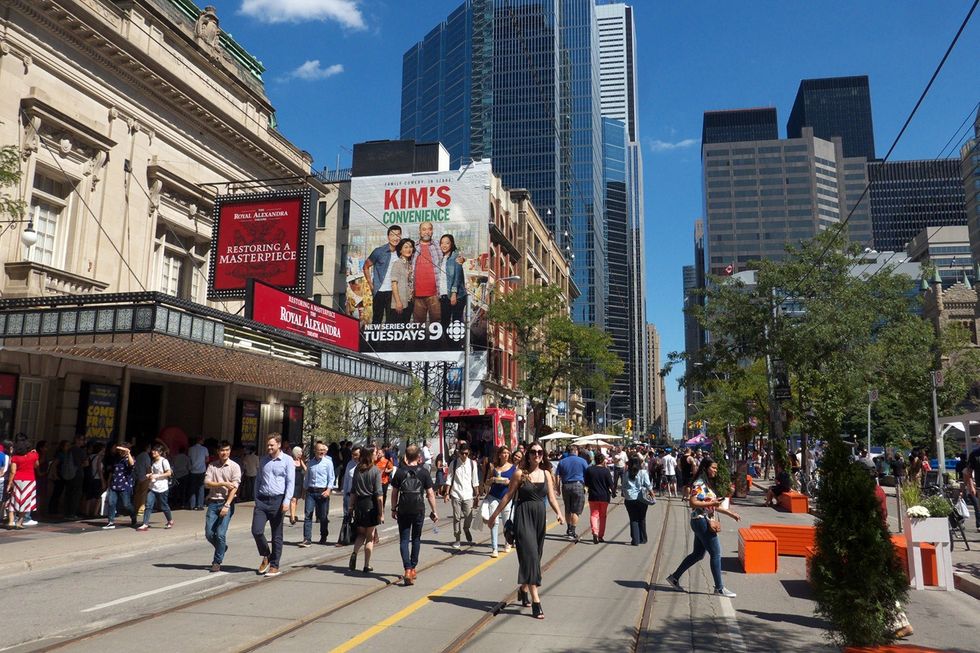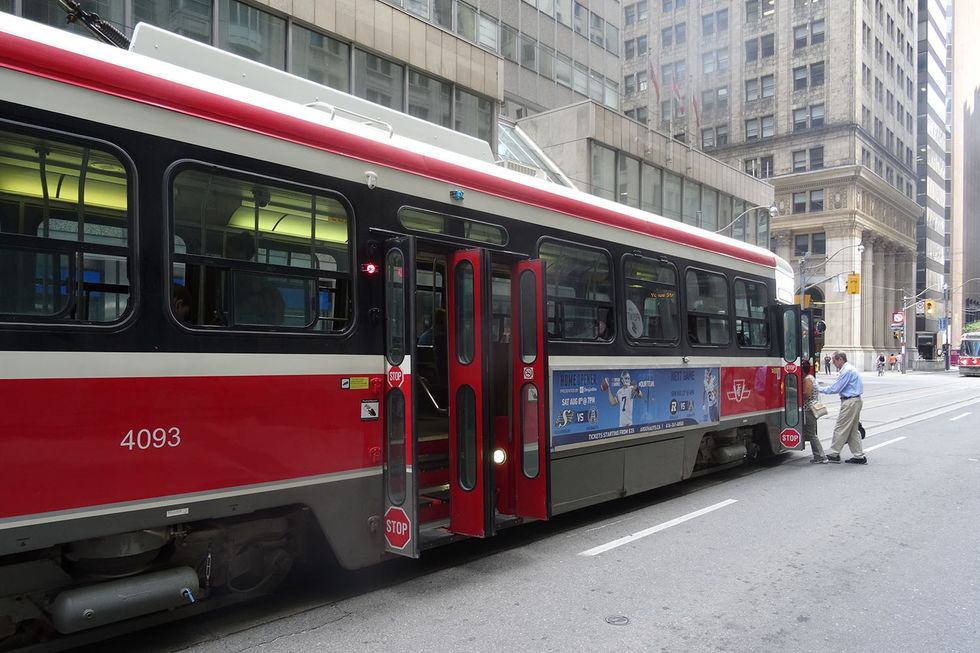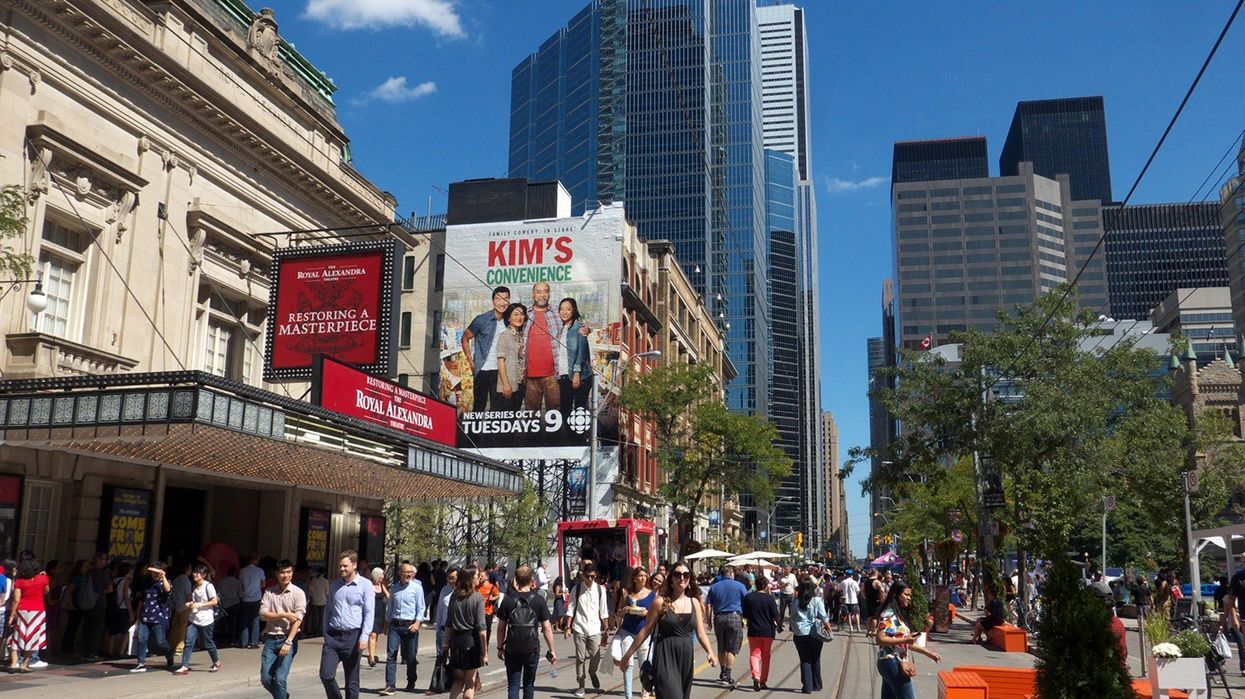
It may not be a streetcar named desire, but the newly configured 504 line is a Toronto transit rider’s dream come true.
With cars and trucks (mostly) eliminated from King Street between Jarvis and Bathurst, TTC rolling stock hums along as never before. There still aren’t enough streetcars to handle demand in the morning and evening rush hours, but when you do finally manage to board one, the trip is dramatically faster.
That’s why the King Street Transit Pilot is Toronto Storey’s Transit Project of 2017.
Its existence is only guaranteed for a year, but already it has changed how we navigate the downtown core, and perhaps even how we see the city. And just weeks after it began operation on Nov. 12, it is hugely popular.
One recent poll found fully 50 per cent in Toronto approve of the pilot. That includes 30 per cent who “strongly” approve. Only a quarter disapprove, 15 per cent “strongly.” The rest are indifferent or — hard to believe — unaware of it.
It would be difficult to overstate the significance of what has happened. For the first time in recent history, the city has prioritized public transit over the private vehicle.

Though the $1.5-million pilot runs only 2.6 kilometres, it signals a sea of change in civic thinking. Official Toronto has moved beyond its assumption — unquestioned for nearly a century — that the streets of Toronto belong to drivers and their automobiles.
On King, at least, where 65,000 people ride the rails daily, the car is no longer king. In other words, City Hall has returned, albeit timidly, to the real world. It has chosen to give the facts a role in how it makes decisions.
By contrast, the ongoing, truth-free, saga of the $3.35-billion Scarborough subway extension, the most controversial and talked about transit story of the year, is a case study in how bad transportation planning can be.
Unlike the King Street Transit Pilot, this is a tale of crass political interference of the most egregious sort. Ontario Premier Kathleen Wynne, Brad Duguid, Ontario Minister of Economic Development and Growth, and Toronto Mayor John Tory, aided and abetted by city planners, have decided to proceed with the infamous one-stop line against all advice.
‘Not a worthwhile use of money’
As an example of wilful ignorance, it is unparalleled.
In a 2013 analysis, provincial transit agency Metrolinx made it devastatingly clear that the proposed subway “is not a worthwhile use of money.”
Worse still, on Dec. 7, Tory, his executive committee and a majority of city council voted against a motion from Councillor Josh Matlow to request the city auditor-general conduct a value-for-money study that would have compared the cost of the subway with an LRT system planners say would provide better service to Scarborough’s low-income neighbourhoods.
But despite low ridership expectations and fears that the real cost of the Scarborough line could exceed $5 billion, civic and provincial politicians are determined to plough ahead with their plan. Why? The answer, however misguided, is votes. How better to win the hearts of Scarborough’s long scorned residents than by offering them a subway, even if does only have one station.
Suburban perceptions of inequality
The truth is that the Scarborough subway has almost nothing to do with transit; instead it has become an emotional issue based on suburban perceptions of inequality.
Though the need for transit is greater downtown, politicians like Scarborough’s Glenn De Baeremaeker would rather talk about how his part of the city “deserves” a subway. They paint a picture of a community that has been neglected and treated unfairly. Unlike Toronto, which gets all the goodies, they say, Scarborough feels unloved and ignored.
Despite the fact the subway extension will hobble the TTC economically for decades to come, local politicians cannot resist the lure of votes. But as Metrolinx pointed out, “This initial assessment suggests the volume of benefit likely required to justify the switch to subway construction will not be generated and the switch would not represent good value for money.”
No wonder the Guardian referred to the Scarborough line as a “white elephant”, calling it “the most expensive single subway stop in history.” And so the fiasco that is transit planning in Toronto continues.
FlickrOn a more positive note, 2017 was also the year the Toronto-York Spadina Subway finally opening. The 8.6-kilometre extension of TTC’s Yonge-University Line will run north from Downsview Park Station up to the Vaughan Metropolitan Centre on Hwy. 7 in York Region.
The six new subway stations were designed by major international architects including London-based Will Alsop, best known in these parts for the Sharp Centre for Design — the famous “flying tabletop” — at the Ontario College of Art and Design.
Though the extension will be welcome — especially by the long-suffering students of York University — it will make riding the TTC more uncomfortable than it already is. That’s because it will increase the number of riders but not the subway’s capacity to accommodate them. The TTC will be more over-crowded than ever.
The obvious ways to expand capacity are the Downtown Relief Line (now also called the Relief Line to avoid offending those who live outside the old city), and the Eglinton Crosstown, which will extend from Mount Dennis in the west to Kennedy in the east. Council has approved but only partially funded the former, while the latter is under construction though not fully funded.
Other questions remain, for instance, why are we building relatively small stand-alone stations instead of integrating them into high-density mixed-use buildings that take advantage of transit?
Toronto has always had difficulty bringing zoning in line with transit. As much as we recognize the connection between density and mass transit, we prefer it when it’s in someone else’s backyard.





















